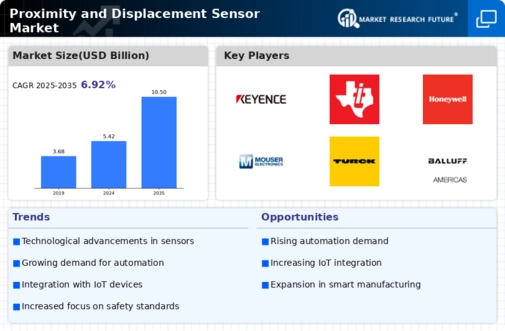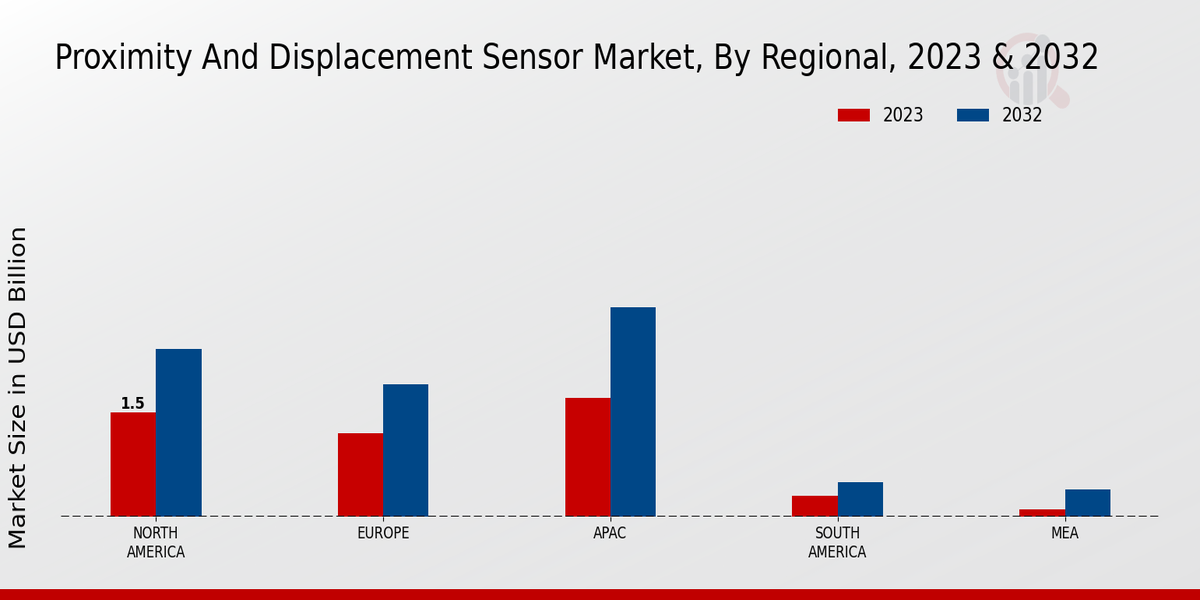Integration with Advanced Robotics
The Proximity and Displacement Sensor Market is experiencing a notable surge due to the integration of advanced robotics across various sectors. As industries increasingly adopt automation, the demand for precise sensing technologies becomes paramount. Proximity and displacement sensors play a critical role in enabling robots to navigate and interact with their environments effectively. For instance, the market for industrial robots is projected to reach USD 70 billion by 2025, which directly correlates with the rising need for sophisticated sensors. This integration not only enhances operational efficiency but also ensures safety in automated processes, thereby driving the growth of the Proximity and Displacement Sensor Market.
Increased Focus on Safety Regulations
The Proximity and Displacement Sensor Market is also propelled by heightened safety regulations across various sectors, including manufacturing, construction, and transportation. Governments and regulatory bodies are increasingly mandating the use of advanced sensing technologies to ensure workplace safety and reduce accidents. For instance, the implementation of safety standards in industrial environments necessitates the use of proximity sensors to detect human presence and prevent machinery-related injuries. This regulatory push is likely to foster growth in the Proximity and Displacement Sensor Market, as companies invest in compliant technologies to meet these standards.
Rising Demand in Consumer Electronics
The Proximity and Displacement Sensor Market is significantly influenced by the burgeoning demand for consumer electronics. Devices such as smartphones, tablets, and smart home appliances increasingly utilize proximity sensors for features like screen activation and gesture recognition. The consumer electronics market is expected to grow at a rate of 5% annually, indicating a sustained interest in innovative technologies. As manufacturers strive to enhance user experience, the integration of advanced proximity and displacement sensors becomes essential. This trend not only drives the market but also encourages continuous innovation within the Proximity and Displacement Sensor Market.
Growing Adoption in Automotive Applications
The automotive sector is a significant driver for the Proximity and Displacement Sensor Market, as manufacturers increasingly incorporate these sensors into vehicles for enhanced safety and functionality. Features such as parking assistance, collision avoidance, and adaptive cruise control rely heavily on proximity sensors. The automotive industry is projected to witness a compound annual growth rate of 4.5% through 2025, which suggests a robust demand for advanced sensing technologies. As electric and autonomous vehicles gain traction, the need for reliable displacement sensors to monitor vehicle dynamics and ensure optimal performance is likely to escalate, further propelling the Proximity and Displacement Sensor Market.
Technological Advancements in Sensing Technologies
Technological advancements are a pivotal driver for the Proximity and Displacement Sensor Market, as innovations in sensor design and functionality continue to emerge. The development of MEMS (Micro-Electro-Mechanical Systems) technology has led to smaller, more efficient sensors that offer enhanced performance. This evolution is particularly relevant in sectors such as healthcare, where precise displacement measurements are crucial for medical devices. The market for MEMS sensors is anticipated to grow significantly, indicating a shift towards more sophisticated sensing solutions. As these technologies evolve, they are likely to reshape the Proximity and Displacement Sensor Market, fostering new applications and opportunities.

















Leave a Comment